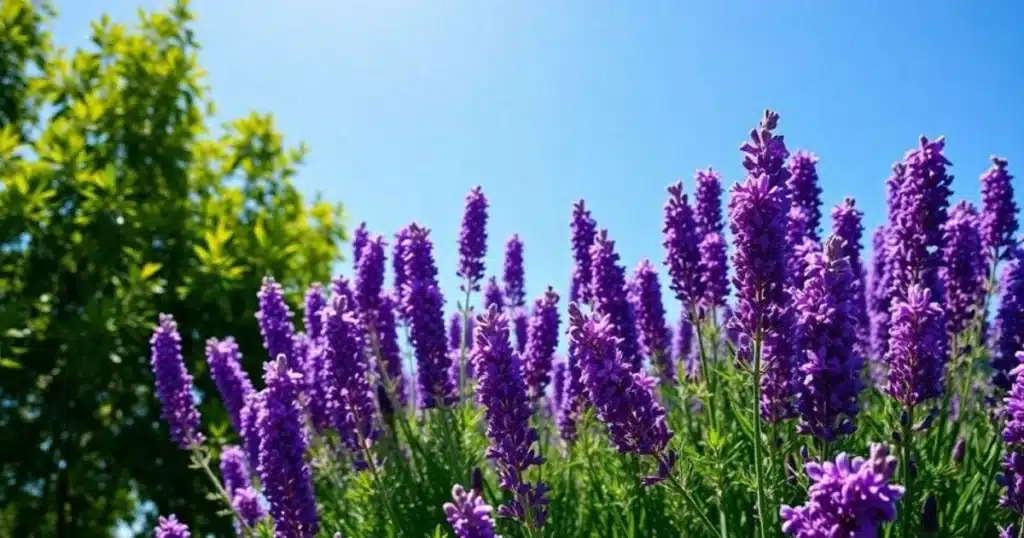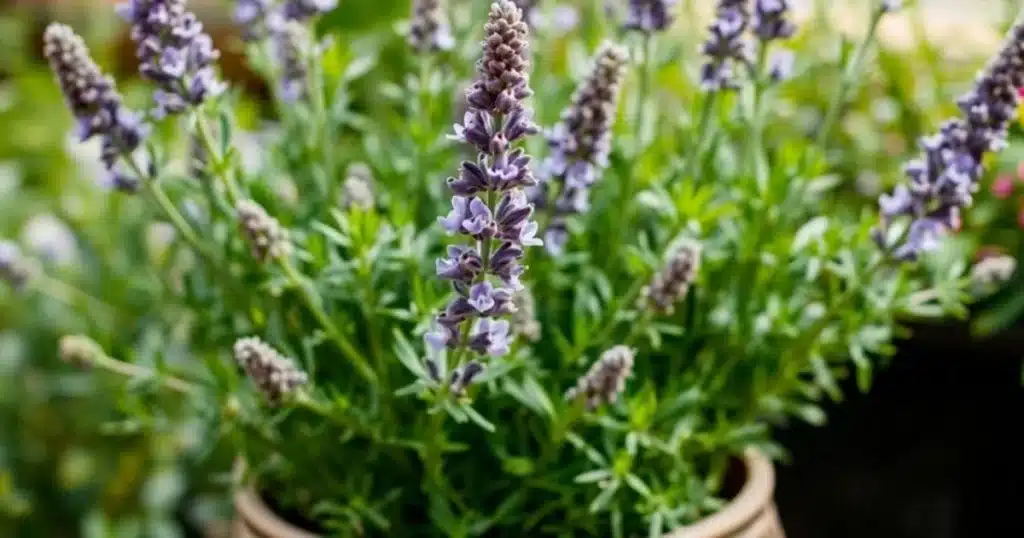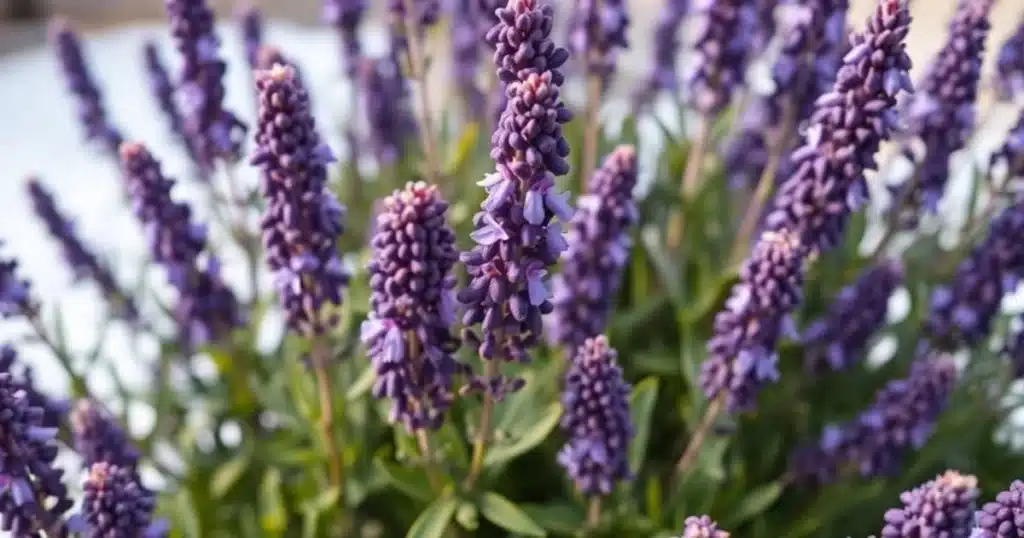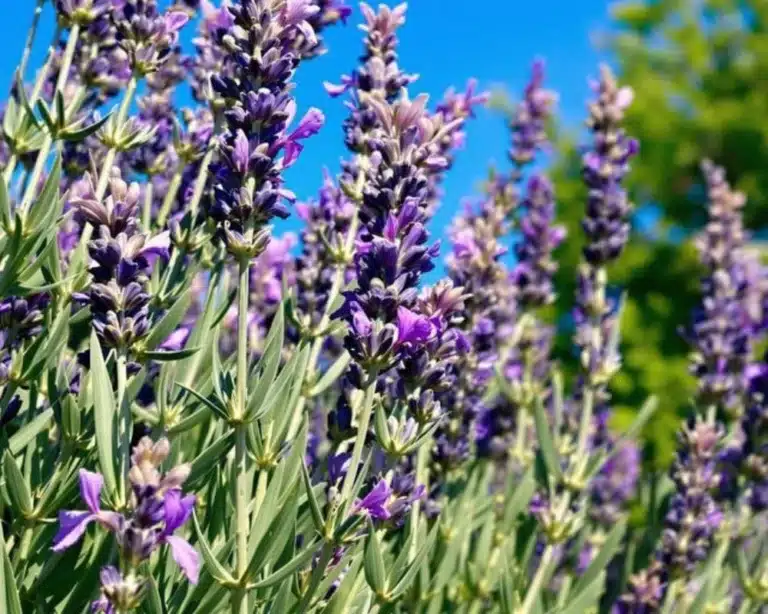Thinking about adding a lavender tree to your garden? These beautiful plants not only look great but also fill the air with a calming scent. Growing lavender might seem tricky at first, but with a few simple tips, you can have a thriving plant in no time. From choosing the right variety for your area to ensuring it gets the right amount of water and sun, each step is important. Let’s dive into some easy-to-follow advice to help your plant flourish.
Table of Contents
Choosing the Right Lavender Tree Variety

Understanding Different Types of Lavender
When you think of a lavender tree, several varieties of lavender might come to mind. The most popular variety is English lavender (Lavandula angustifolia), known for its fragrant flowers and hardy nature. French lavender (Lavandula dentata) also stands out with its unique flower color and compact blooms, while Spanish lavender (Lavandula stoechas) offers beautiful fresh flowers and distinctive “ears” on its flowers. Each has its own charm, making it essential to understand these differences to pick the right type for your garden.
Selecting Lavender Trees for Your Climate
Choosing the right lavender variety for your climate is crucial. English lavender is hardy in Zones 5 to 9, making it a versatile choice for many regions. Meanwhile, Spanish lavender thrives in warmer climates, particularly in Zones 8 to 9, offering abundant flowers in the right conditions. French lavender loves the heat, performing best in Zones 8 to 11. Consider your local conditions before deciding which lavender tree to plant.
Consulting Experts for Lavender Tree Selection
Sometimes, picking the right lavender tree can be tricky. Consulting with gardening experts or local nurseries can provide valuable insights. They can guide you towards the best lavender standard for your specific environment, ensuring your lavender flower thrives. Don’t hesitate to ask for advice, especially if you’re new to growing these beautiful plants.
Lavender trees not only bring a splash of color with their stunning blue and purple lavender blooms but also offer a delightful aroma that can transform any garden space into a fragrant oasis. Take the time to choose the right variety, and you’ll be rewarded with a thriving, aromatic garden centerpiece.
Discover ornamental tree varieties to complement your lavender tree for a harmonious garden design
Planting Your Lavender Tree for Success
Preparing the Ideal Soil and Location
Lavender thrives when planted in well-draining soil, which allows the roots to develop and support flower production. Choose a sunny spot where your tree can soak up at least six hours of sunlight each day. This setup not only helps with growth but also keeps diseases at bay. Lavender is known for its ability to act as a companion plant for other sun-loving species in your garden, providing both beauty and function.
Spacing and Planting Techniques
When you’re ready to plant, timing is everything. Aim for early spring or fall when the weather is mild. Dig a hole twice the size of your tree’s root ball to give it room to spread. Make sure the crown sits level with the soil surface, then gently pack the soil around it, eliminating any air pockets. Space your lavender trees 2 to 3 feet apart to allow for good air circulation, which is vital for preventing disease.
Ensuring Proper Drainage
Proper drainage is key to a healthy lavender tree. If your soil tends to hold moisture, consider planting on a slope or in a raised bed to avoid water pooling around the roots. This is particularly important in areas with heavy rain. Adding a layer of mulch can help retain moisture while preventing weed growth, but be careful not to cover the crown of the tree, as this can lead to rot.
Explore different types of shrubs that thrive alongside lavender trees for optimal garden balance
Watering and Fertilizing
Establishing a Watering Routine
Lavender trees, known for being drought tolerant, still need a thoughtful watering routine, especially when they’re young. At first, water them consistently to help the roots settle. Once established, let the soil dry out between waterings. This helps the roots grow deeper and stronger. Avoid overhead watering to keep moisture off the leaves, which can lead to mildew.
Avoiding Overwatering and Root Rot
Overwatering is a common mistake with lavender trees. They thrive in well-drained soil and can suffer if their roots sit in water. Make sure your planting area or pot has good drainage. If you’re growing them in pots, use a mix of soil, sand, and perlite to enhance drainage. Remember, it’s better to underwater than overwater.
Fertilization Tips for Healthy Growth
Lavender trees aren’t heavy feeders. In fact, too much fertilizer can cause more harm than good. Use a balanced, slow-release fertilizer in early spring. Avoid fertilizers high in nitrogen as they can lead to excessive leaf growth at the expense of flowers. Lavender prefers alkaline soil, so check your soil’s pH and adjust if necessary.
Pruning and Shaping
Timing Your Pruning Sessions
Pruning your lavender tree at the right time is crucial for maintaining its health and appearance. Ideally, you should prune just after the first bloom. This encourages a second flowering and keeps the plant looking tidy. Late summer is also a good time to give your lavender a final trim to prepare it for the colder months. Avoid cutting into the woody parts of the plant as this can damage it.
Techniques for Maintaining Tree Shape
To keep your lavender tree looking its best, focus on shaping it into a neat, rounded form. This involves cutting back about one-third of the plant’s height, making sure not to cut into the old wood. Use sharp, clean shears to avoid tearing the plant. Regular trimming helps in maintaining the desired shape and promotes new growth.
Encouraging Bushier Growth
If you want a fuller, bushier lavender tree, regular pruning is essential. Each time you prune, you encourage the plant to produce more branches, which leads to a denser appearance. Consistently removing spent flowers can also redirect the plant’s energy into growing more lush foliage rather than seed production.
Protecting Your Lavender Tree in Winter
Insulating Roots with Mulch
Winter can be tough on lavender trees, especially in a colder climate. To help them survive, start by insulating the roots. Spread a thick layer of mulch, like straw or evergreen boughs, around the base of your lavender tree. This acts like a warm blanket, keeping the roots from freezing. Just make sure not to pile it directly on the trunk, as that might cause rot.
Using Frost Cloths for Cold Protection
Frost cloths are a great way to shield your lavender tree from harsh winter winds and frost. Drape the cloth over your tree, securing it at the base. This simple step can make a big difference in protecting your tree from extreme temperatures. Remember, it’s not just about keeping the tree warm, but also preventing damage from cold winds.
Preparing for Spring Revival
As winter winds down, it’s time to get your lavender tree ready for spring. Gradually remove the mulch as the weather warms up. This helps the soil to breathe and prevents excess moisture from building up. Check for any winter damage and prune back dead or damaged branches to encourage new growth.
Taking a few proactive steps during winter can help your lavender tree come back strong and healthy when lavender in spring arrives. With the right care, even in a colder climate, your lavender tree can thrive year after year.
Learn how to protect delicate plants like hibiscus trees during winter and apply similar methods to your lavender tree.
Growing Lavender Trees in Pots

Choosing the Right Pot and Soil Mix
When you’re setting up your herb garden, picking the right pot for your lavender tree is crucial. Opt for a pot that’s at least 12-16 inches in diameter. This size offers enough room for the roots to spread, ensuring healthy growth. Terra cotta pots are a fantastic choice because they help the soil dry out between waterings, preventing root rot. Make sure your pot has ample drainage holes.
For the soil, lavender thrives in a well-draining mix. You can either purchase a potting mix specifically designed for lavender or create your own by blending standard potting soil with sand or perlite. Aim for a slightly alkaline to neutral pH, which you can achieve by adding a bit of garden lime if needed.
Sunlight and Watering Requirements
Lavender loves the sun, so place your pot in a spot where it can soak up at least six to eight hours of direct sunlight each day. If your pot is in a spot where sunlight varies, rotate it occasionally to promote even growth.
When it comes to watering, less is more. Lavender prefers dry conditions, so water deeply but infrequently. Always let the soil dry out between waterings to avoid root rot. After watering, be sure to empty any saucers beneath the pot to prevent the roots from sitting in water.
Pruning for Potted Lavender Trees
Regular pruning is key to maintaining the shape and health of your lavender tree. Trim back about one-third of the plant after it has flowered, but be cautious not to cut into the woody stems, as lavender doesn’t regenerate well from old wood. Deadheading, or removing spent flowers, will encourage continuous blooming and keep your plant looking tidy.
Learn pot-growing techniques that also work well for fig trees.
Managing Pests and Diseases
Identifying Common Pests and Diseases
Lavender trees, though hardy, can fall victim to a variety of pests and diseases. Recognizing these early can save your plant from serious damage. Some common pests include whiteflies, aphids, and spider mites. These little invaders often suck the sap from leaves, leading to wilting and yellowing. On the disease front, root rot is a major concern, particularly if the plant is overwatered or not planted in well-draining soil.
Natural Solutions for Pest Control
Dealing with pests doesn’t always require harsh chemicals. Here are some natural methods to keep those unwanted guests at bay:
- Spray with water: A strong jet of water can dislodge pests like aphids and whiteflies.
- Insecticidal soap: This is a gentle but effective way to handle pests without harming beneficial insects.
- Introduce beneficial insects: Ladybugs and lacewings feed on many common lavender pests.
Preventing Fungal Infections
Fungal infections are often the result of excess moisture and poor air circulation. To minimize the risk:
- Ensure your lavender tree is planted in a sunny spot with good airflow.
- Avoid overhead watering to keep foliage dry.
- Space plants adequately to prevent overcrowding.
Tip: Regularly check your lavender tree for signs of disease or pests. Early detection is key to managing these issues effectively.
Harvesting and Using Lavender from Your Tree
Timing Your Lavender Harvest
When it comes to harvesting lavender, timing is everything. The best time to snip those fragrant blooms is in the mid-morning, once the dew has dried but before the heat kicks in. This is when the essential oils are most concentrated, giving you the best aroma and potency. Use clean, sharp scissors to cut the stems just above the leaves, ensuring you leave enough length for bundling. Aim to harvest when the flowers are in full bloom but not yet wilting.
Drying and Storing
After harvesting, it’s important to dry your lavender correctly to preserve its scent and color. Gather about 10 to 20 stems and tie them into bundles. Hang these bundles upside down in a cool, dark, and well-ventilated area. Once dry, remove the flowers from the stems and store them in airtight containers. Properly dried and stored lavender can last up to a year, maintaining its aromatic qualities.
Creative Uses for Lavender

Lavender isn’t just pretty to look at; it’s incredibly versatile. Here are some ways you can use your harvested lavender:
- Aromatherapy: Use dried lavender or essential oils in diffusers to promote relaxation.
- Culinary: Add lavender buds to teas, baked goods, or even savory dishes for a unique flavor twist.
- Crafts: Incorporate dried lavender into sachets, potpourri, or homemade candles.
Wrapping Up Your Lavender Journey
So, there you have it! Growing a lavender tree isn’t rocket science, but it does need some TLC. With the right spot, good soil, and a bit of patience, your lavender tree can thrive and fill your space with its lovely scent. Remember, it’s all about balance—too much water or too little sun, and you might run into trouble. But don’t worry, with these tips, you’re well on your way to having a beautiful lavender tree. Happy gardening!
Frequently Asked Questions
How much sun does a lavender tree need?
Lavender trees love the sun and need at least six hours of direct sunlight each day to grow well.
Can I grow a lavender tree indoors?
Yes, you can grow a lavender tree indoors, but make sure it gets enough sunlight. Place it near a sunny window.
What type of soil is best for a lavender tree?
Lavender trees need soil that drains well. You can mix regular soil with sand or gravel to help with drainage.
How often should I water my lavender tree?
Water your lavender only when the soil feels dry. Be careful not to overwater, as this can cause root rot.
Do lavender trees need fertilizer?
Lavender do not need a lot of fertilizer. If you use any, choose a balanced, slow-release type in the spring.
When is the best time to prune a lavender tree?
Prune your lavender just after it blooms to keep it healthy and looking nice.


8 thoughts on “Lavender Tree Care: Powerful Tips for Thriving Plant”